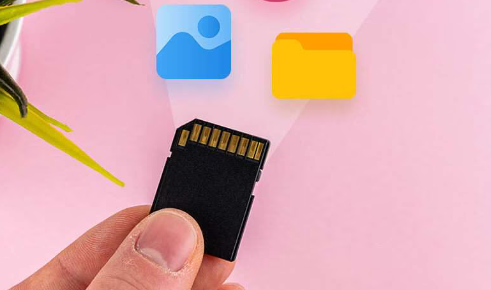In an age dominated by digital devices, SD cards have become a vital medium for storing valuable data. Whether in smartphones, digital cameras, drones, or tablets, SD cards store our most treasured memories and critical information. But what happens when that data suddenly disappears? Fortunately, there are free SD card recovery tools available that can help you recover your lost files without spending a dime.
Accidental deletion
Formatting the card
File system corruption
Virus or malware attacks
Physical damage to the card
Improper ejection from devices
When a file is deleted or the SD card is formatted, the data isn’t immediately destroyed. Instead, the system marks the space as available for new data. If acted upon quickly, recovery tools can scan the card and restore these files.

Criteria for Evaluating Recovery Tools
Not all data recovery tools are created equal. When selecting the best free tool for SD card recovery, we considered:
Ease of Use
Supported File Types
Operating System Compatibility
Scanning Options (Quick vs. Deep)
Recovery Success Rate
Free Version Limitations
Top Free SD Card Recovery Tools in 2025
1. Panda Assistant
Panda Assistant is an emerging name in the data recovery space, offering a surprisingly effective and user-friendly solution for recovering data from SD cards at no cost. What sets Panda Assistant apart is its seamless interface, fast scan capabilities, and generous free tier, making it a standout choice among more established competitors.
Pros:
Intuitive and modern interface designed for all skill levels
Supports a wide range of file formats including photos, videos, and documents
Fast scanning engine with both quick and deep scan options
Allows free recovery of a substantial amount of data
Real-time preview of recoverable files
Cons:
Currently available only for Windows and macOS
May not support as many niche file types as some command-line tools
Limited advanced recovery features (e.g., partition repair) in the free version
Best For: Users seeking a fast, reliable, and easy-to-use solution for recovering photos and files from SD cards without the steep learning curve.
What makes Panda Assistant particularly appealing is its emphasis on user experience. The step-by-step recovery process guides users through each stage from scanning the SD card to previewing and restoring files without technical jargon or confusion. Additionally, the software provides a generous free recovery quota, making it practical for most casual recovery needs.
2. Recuva
Platform: Windows
File Systems Supported: FAT, NTFS, exFAT
Pros:
User-friendly GUI
Offers both quick and deep scan modes
Previews image files before recovery
Portable version available
Cons:
Windows only
Deep scan may be time-consuming
Not as effective for newer file formats
Best For: Beginners or casual users looking for a simple and intuitive tool.
3. Disk Drill (Free Version)
Platform: Windows, macOS
File Systems Supported: FAT32. exFAT, NTFS, HFS+, EXT4
Pros:
Sleek interface
Supports a wide range of file types and formats
Free recovery up to 500MB (Windows)
Cons:
Recovery limit of 500MB in free version (Windows only; macOS free version only previews)
May prompt for upgrade often
Best For: Users needing a polished experience and recovering small to moderate amounts of data.
4. EaseUS Data Recovery Wizard Free
Platform: Windows, macOS
File Systems Supported: FAT, NTFS, exFAT, HFS+
Pros:
Easy to use
Recovers up to 2GB for free
Deep scan available
Cons:
Free version has a 2GB limit (with registration)
May attempt to upsell premium features
Best For: Users who want a balance of performance and ease of use, with slightly more free recovery capacity.
5. iCare Data Recovery Free
Platform: Windows
File Systems Supported: FAT, NTFS, exFAT
Pros:
Free version available with no recovery limit
Supports a variety of file types
Cons:
Interface feels outdated
Recovery process is slower
Effectiveness may vary based on data corruption
Best For: Budget-conscious users needing free unlimited data recovery.
6. Windows File Recovery (Microsoft)
Platform: Windows 10/11 (CLI-based)
File Systems Supported: NTFS, FAT, exFAT, ReFS
Pros:
Official Microsoft tool
Free with no restrictions
Supports multiple recovery modes
Cons:
Command-line only
Limited file preview options
Best For: Tech-savvy Windows users looking for a native and secure solution.
7. TestDisk (Companion to PhotoRec)
Platform: Windows, macOS, Linux
File Systems Supported: FAT, NTFS, exFAT, ext2/3/4
Pros:
Recovers lost partitions
Free and open-source
Ideal for damaged or unreadable cards
Cons:
CLI interface
Not ideal for single-file recovery
Best For: Advanced users needing to recover entire partitions or severely corrupted SD cards.
How to Use an SD Card Recovery Tool (General Steps)
Stop using the SD card immediately to prevent overwriting lost data.
Connect the SD card to your computer using a card reader.
Download and install the chosen recovery tool.
Run a quick scan to find recently deleted files.
Use deep scan if files aren’t found initially.
Preview and select the files you want to recover.
Recover to a different location to prevent further data loss.
Tips for Preventing Future Data Loss
Back up your SD card regularly
Use reliable and high-quality SD cards
Safely eject SD cards before removal
Avoid using the same card in multiple devices frequently
Keep your device firmware and antivirus updated
About us and this blog
Panda Assistant is built on the latest data recovery algorithms, ensuring that no file is too damaged, too lost, or too corrupted to be recovered.
Request a free quote
We believe that data recovery shouldn’t be a daunting task. That’s why we’ve designed Panda Assistant to be as easy to use as it is powerful. With a few clicks, you can initiate a scan, preview recoverable files, and restore your data all within a matter of minutes.

 Try lt Free
Try lt Free Recovery success rate of up to
Recovery success rate of up to









